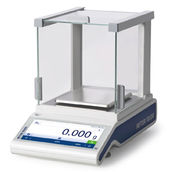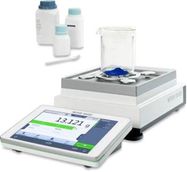Lilly: New Data Show Intramuscular Formulation of Zyprexa® Controlled Agitation Associated with Dementia in Elderly Patients
Advertisement
Data were presented yesterday at the 14th annual meeting of the American Association of Geriatric psychiatry (AAGP) in San Francisco regarding an intramuscular formulation of Zyprexa (olanzapine, Lilly) for the control of agitation associated with dementia.
An estimated five percent of people aged 65 and older and up to 20 percent of those aged 80 and older are affected by dementia. Of these sufferers, nearly half exhibit behavioral disturbances, such as agitation, wandering and violent outbursts. Agitation is a well-recognized behavioral syndrome with a range of symptoms, including hostility, extreme excitement, poor impulse control, tension and uncooperativeness.
"Acute agitation can be terribly distressing for patients and caregivers, particularly when it involves elderly patients," said Jamie S. Street, M.D., Clinical Research Physician with the Zyprexa Product Team. "In our study, Zyprexa IntraMuscular calmed patients, according to multiple measures. The control of agitation may help to alleviate the stress placed on caregivers who treat patients suffering from dementia."
On February 14th, the U.S. Food and Drug Administration's Psychopharmacologic Drugs Advisory Committee unanimously recommended approval of an intramuscular formulation of Zyprexa for the control of agitation associated with dementia, schizophrenia and bipolar mania. The committee's recommendation was based upon the positive safety and efficacy results presented in the clinical trials. Four clinical trials were conducted in three disease states: two in schizophrenia, one in dementia and one in bipolar mania.
Design and Results of Trial
Zyprexa IntraMuscular's effect in controlling agitation was evaluated in a randomized, double-blind, placebo-controlled study in 272 patients with Alzheimer's disease, vascular dementia or mixed dementia ranging in age from 54 to 97 years old (average age was 77). Patients were randomized to receive up to three intramuscular injections within 24 hours: either olanzapine 2.5 mg, olanzapine 5 mg, lorazepam 1 mg or placebo. In the clinical trial, more than 60 percent of the dementia patients using olanzapine did not require a second injection for the control of agitation.
The control of agitation with Zyprexa IntraMuscular was statistically superior to placebo based upon several agitation scales, including the Positive and Negative Syndrome Scale Excited Component (PANSS EC).
Key Findings
In addition, the study found:
Patients in the olanzapine 5 mg treatment group showed significantly greater improvement relative to placebo on the PANSS-EC at all time points measured (30 minutes, 60 minutes, 90 minutes and 2 hours). Patients in the olanzapine 2.5 mg treatment group showed significantly greater improvement relative to placebo at the two-hour time point.
Safety Information
In this trial, adverse events included somnolence (sleepiness), dizziness and headache. No patients experienced a serious adverse event, and there were no significant differences found between Zyprexa IntraMuscular and IM placebo or IM lorazepam for vital sign changes. The data indicate that Zyprexa IntraMuscular has no clinically relevant effect on blood pressure or ECG interval, including QTc. In addition, the study showed no statistically significant differences in the occurrence of extrapyramidal symptoms (EPS) between patients treated with Zyprexa IntraMuscular and those treated with placebo. EPS, to which the elderly are particularly susceptible, are a side effect which includes painful muscle spasms.






































































